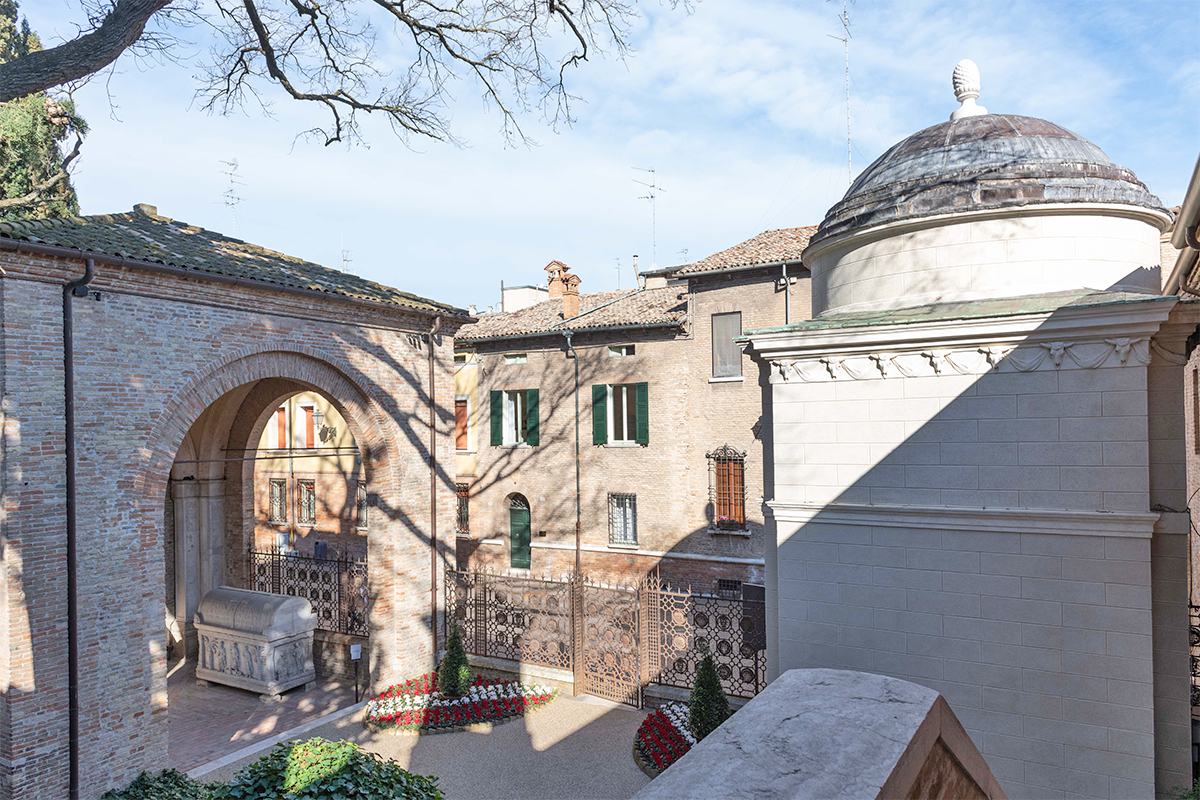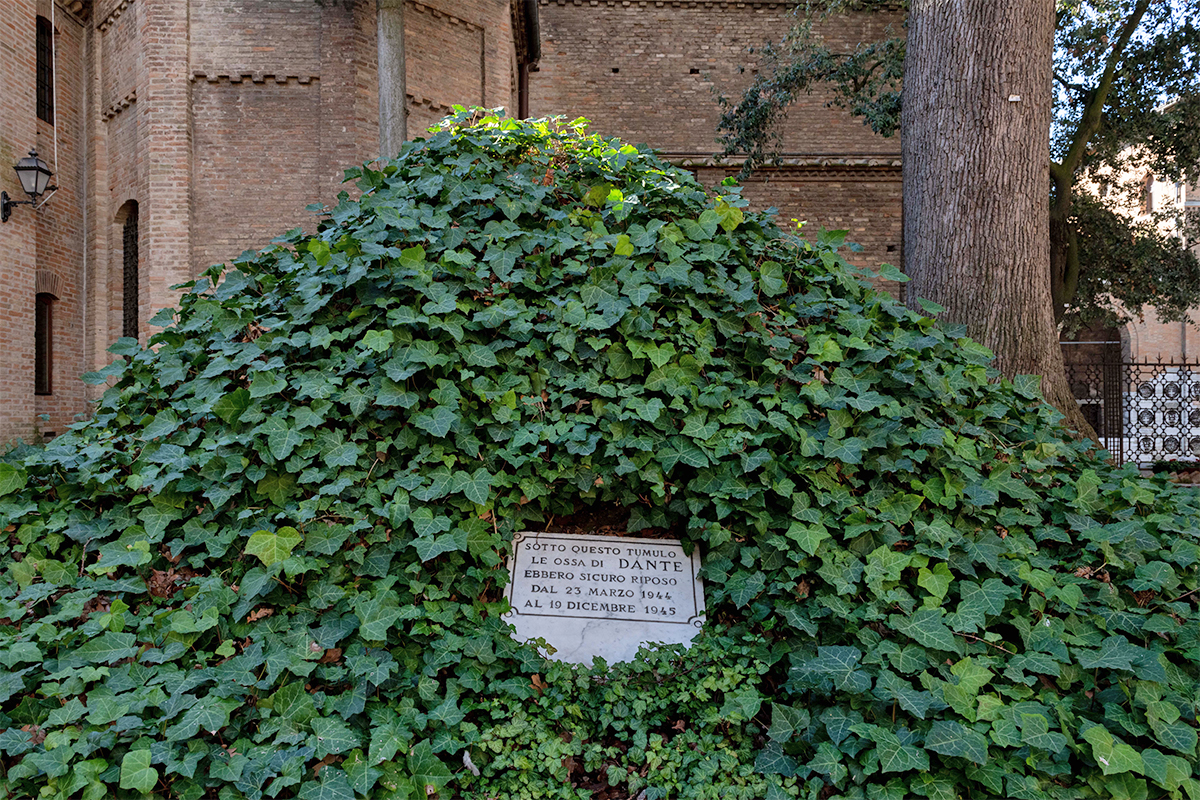Destination of thousands of tourists visiting Dante’s Tomb every year, the so-called QUADRARCO OF BRACCIOFORTE is a little corner of tranquillity in the very heart of Ravenna.
The Quadrarco of Braccioforte is located in the so-called Zone of Silence, inextricably linked to the memory of the Supreme Poet.
In the 10th century, historian from Ravenna Andrea Agnello wrote in his chronicles that here, in the past, was a little oratory, connected through a portico to the nearby Basilica of San Francesco, which is no longer there today.
Legend has it that the name “Braccioforte” is connected with the story of two worshippers, who were willing to do anything in order to be listened by the Lord.
Right in the place of the monument, the two men had sworn an oath invoking the “strong arm” of Christ, in Italian “braccio forte”, in front of the Christ’s image that was preserved here.
Dante and the Quadrarco
The spoils of the Supreme Poet were buried where today is a little courtyard between Dante’s Tomb and the Basilica of San Francesco. They were buried there in order to keep them safe from the bombings of World War II.
A little mound of earth covered with ivy, right at the centre, takes us back to those memories. Here is a gravestone that says “Under this mound the bones of Dante found safe rest from 23 March 1944 to 19 December 1945”.
In truth, Dante’s spoils had never been in danger nor threatened by bombings. Nonetheless, in the name of an extreme safeguard, the fascist party official Alessandro Pavolini had made an agreement to move the poet’s remains in Valtellina (a valley in the Lombardy region) in case of danger.
The relationship between the Quadrarco and Dante resides also in other elements of the area – first of all an old wall that today has been restored, but used to border with the old Franciscan Cloisters.
Between the 16th and the 19th century, the spoils of the Poet were hidden by the friars more than once, in order to keep them safe from any pretenders – especially Florence.
Then, there is the imposing centuries-old oak, wanted by Giosuè Carducci to commemorate the Supreme Poet at the beginning of the 20th century. With its arms, the oak embraces and protects the entire area.
Lastly, there is the so-called “bell of Dante” on the top of a staircase, just behind the tomb.
Quadrarco Garden
Inside the Quadrarco’s courtyard, a series of marble sarcophagi are preserved. Among them, two dating back between the 5th and the 6th century A.D. stand out; they were used some time later by members of two noble Ravenna families, Pignata and Traversari.
Since 1921 the Quadrarco is enclosed by a wrought iron fence, created by Umberto Bellotto from Venice.









